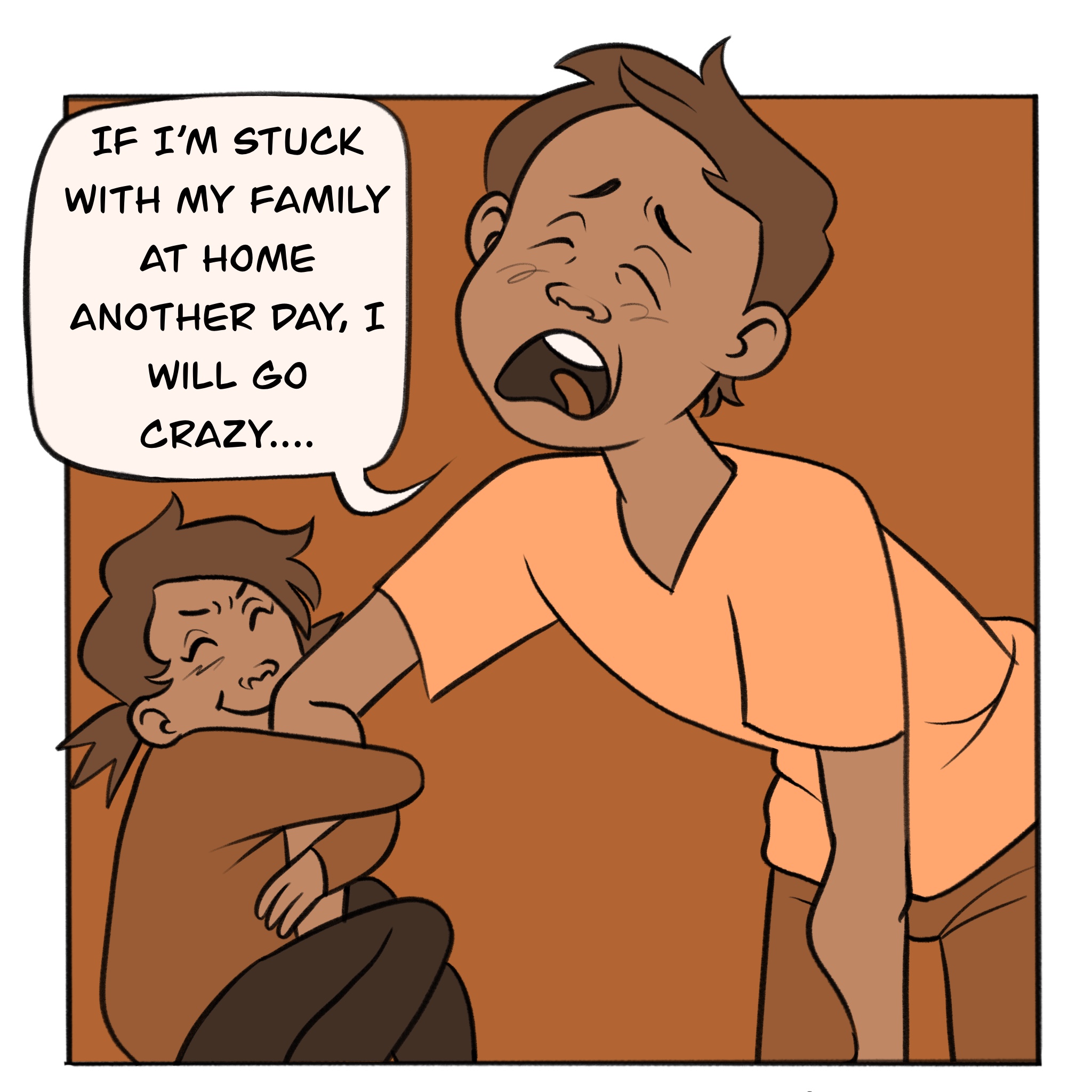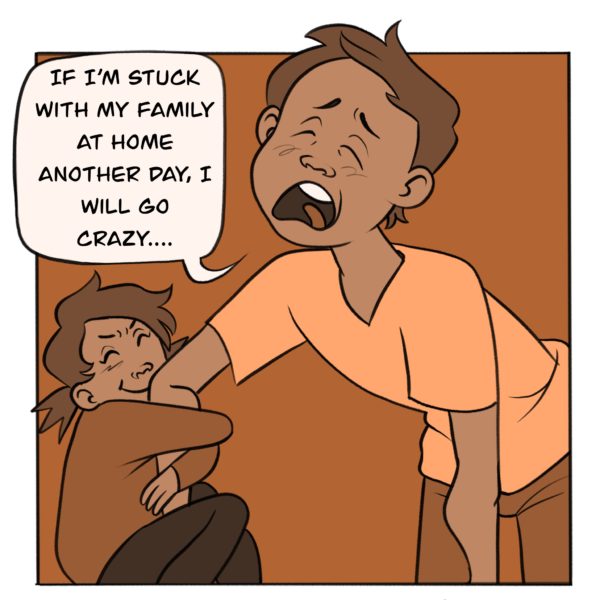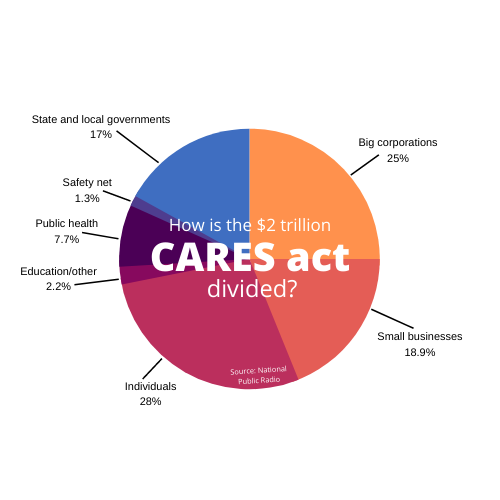

The United States has been struggling with an outbreak of COVID-19. All levels of the government from federal to local are fighting to limit the spread of the virus. The federal government closed the U.S. borders and blocked travel from other nations. The San Mateo County government issued a shelter in place order to flatten the curve of the virus’ spread. School districts across the state and nation, including San Mateo Union High School District, closed schools for the remainder of the school year.
The federal government, in the days following the shelter in place order given in the Bay Area and other states, advised states to issue shelter in place or stay at home orders. While not every state has done so, the majority of the states have issued such orders. In response to the need for trained medical personnel, the federal government issued orders for military reservists with medical background to be ready to return to service.
Senior Andres Zimmermann said, “I think that’s the biggest issue with the federal government right now is the failure to produce sufficient testing kits. For example, South Korea, during the peak crisis, especially managed to test the entire population. In contrast, the Federal Government has essentially fallen asleep on the job and is unable to produce testing kits. Famously the first testing kits they produced were ineffective. So overall I would say that the response has been lacking.”
“The federal government continues taking aggressive and proactive steps to address the coronavirus pandemic. The health and safety of the American people is our top priority. Under the direction of the White House Coronavirus Task Force, FEMA, HHS and federal partners are working with state, local, tribal and territorial governments to execute a Whole-of-America response to fight the COVID-19 pandemic and protect the public,” according to the Federal Emergency Management Agency.
National news outlets also report that the federal government has enlisted Ford, GM, Tesla and Toyota to produce much needed ventilators for hospitals.
“I think the increasing costs of scientific research, something that should have been done years ago, the Trump administration cut the CDC budget a couple of years back hampering the CDC’s ability to respond to the crisis now,” Zimmermann said. “I would say that yes without question to invest more money in doing research now. We also should not have cut the CDC budgets in the past.”
Along with providing the testing kits and increasing funds for scientific research, the federal government is scrambling to find labs to process completed test kits.
“There needs to be free testing and also more testing so that we can better understand who has the virus and so that asymptomatic people can quarantine themselves to help flatten the curve,” said AP Government and Honors Economic teacher Jonathan Felder,”[The] federal government should provide testing for individuals who feel they may be infected.”
Junior Brandon Wong is not on board with the idea of the federal government providing free testing kits for all citizens.
“I don’t know about free either, Because, even a regular flu vaccine isn’t free,” Wong said. “ I think definitely they should increase [testing], because this is hearsay, but some countries are trying to reduce testing so that makes themselves look like they have fewer cases. I would not be surprised if certain parts of the U.S. government are trying to do that too. So yes to increased testing, but I don’t think that free for everyone is going to be very feasible.”

The local side of the government response to COVID-19 is the “shelter in place” order. The order allows people to leave their homes for essential goods, such as food and medicine, as well as to exercise themselves and their pets. When leaving their homes, citizens are to practice “social distancing.” Social distancing is new to the American lexicon, but refers to individuals maintaining a six feet buffer between themselves and others. The hope is that social distancing works hand in hand with the “shelter in place” order to stop the virus from spreading.
“I think it definitely would be effective at stemming the increase in COVID-19 cases because people are stuck at home,” Zimmermann said. That being said, Zimmerman does have concerns about whether the shelter in place is being adhered to by citizens.
“However, I do wonder, are people really following the shelter in place? For example, I hear that in Florida there were tons of people on Spring Break going to beaches during the shelter in place. And I worry that people around here are also not following the Shelter in Place therefore, not helping the crisis. But overall, shelter in place works when most people actually do it,” Zimmermann said.
The school districts are clearly taking the shelter in place order seriously by shuttering the schools to students and staff. Felder understands that the shelter in place order helps to reinforce school closures.
“Shelter in place is a good idea to discourage people from making unnecessary trips out and really stop the spread of the virus. It helps maximize the effectiveness of measures such as school closures and working from home,” Wong said.
San Mateo County has declared a state of emergency due to the COVID-19. The county health officials have released statements reprimanding citizens for their lack of adherence to the shelter in place order and closed beaches and parks to citizens. The response to the virus has been decisive and different from that to the fires in recent years.
“[The virus] is definitely pretty big; I mean if you compare the fires, school shut down for one day. Here it’s like months across the state, so this is definitely a lot bigger than a lot of other things we’ve seen,” Wong said.
On March 27th, the US government passed the $2 trillion dollar Coronavirus Aid, Relief, and Economic Security Act (CARES). “The CARES Act provides fast and direct economic assistance for American workers, families, and small businesses, and preserves jobs for our American industries,” according to the US Treasury Department. Families and individuals within a defined earning bracket received direct payment from the government starting in the beginning of April. Large corporations, small businesses, and state and local governments will receive the remaining funds in either a loan (which will not be repaid) or lump sum payments.
COVID-19 is affecting all levels of the governments from the federal government to county governments. COVID-19 has changed the way that Americans interact with each other as citizens struggle to find new ways to work and to learn from home. Sports stadiums, parks, and schools all sit silently as the nation battles this pandemic. All levels of government have responded to the virus in various ways, but the goal has been the same across the board — limit the spread to flatten the curve.



